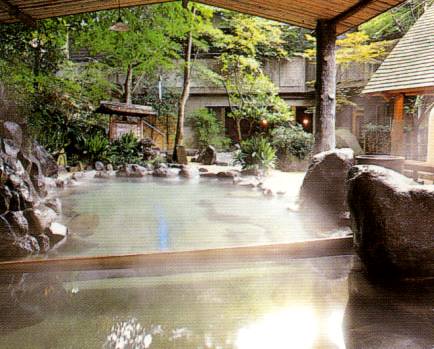We had a relatively sleepless night in Narita Airport. Our flight, scheduled to take off at 6:25 am, departs before the earliest train in from Tokyo. There are several hotels near the airport that cater specifically to travelers, but even they don't begin their airport shuttle services until at least 6:30. I believe there is a hotel within in the airport itself, but it's exorbitantly expensive. The only safe and economical choice was to spend the night in the departure terminal.
Sleeping in the airport is not quite as taboo as you might think. Many people with late departures or early arrivals choose to spend the night at the airport to avoid a several hundred dollar taxi ride into town (taxi is the only way in and out in the dead of night). A poor fellow from an English speaking country got off a plane with his girlfriend and asked a nearby info counter where to take the train into Tokyo. The attendant informed him that there were no more trains, and he looked to his stunned girlfriend and said, "Shit..."
At around 11 pm, after the trains have shut down, the security guards in the airport round everybody up, take down their passport and flight information, and let everyone find space to sleep. These guards wander about the halls for the rest of the night, making sure everyone is safe and that there's no sleeping person becoming the victim of thievery. The presence of the security guards made me feel comfortable even when wearing my eye covers and drifting off to sleep.
Five hours later, I groggily arose to go check in for our flight. I slept well, if not for only a short time, but Kristin said she couldn't get much sleep with the lights still on. I highly recommend eye covers and earplugs if you plan to sleep in an airport.
Anyways, less than 3 hours later, we landed in Kansai International Airport. The first thing we felt when we walked outside: it's HOT!! With the highs in Osaka dangling around 34 C, we were sweating immediately. We bought our train tickets into Osaka proper, along with a subway 1-day pass, and rode the half-hour into Namba station.
This area is the Southern Downtown district, called "Minami", and is extremely lively, filled with covered walking streets lined with food and goods shops. Since it was early in the morning, we walked into a cheap fast-food noodle shop and had some udon. It was nothing to scream about, but it was cheap and it filled us up. We spent the next hours wandering through the endless busy streets towards Doutonbori, the famous busy shopping district of Osaka.
 |
| Doutonbori |
We couldn't find anything else interesting to do, so we went to look for something to eat. We went really far out of our way to find a small mom and pop shop that serves up one of Osaka's famous cuisines: お好み焼き okonomiyaki. I've heard it described as a "Japanese pizza", but it's something more like a vegetable pancake slurry. The main ingredient is shredded cabbage, around which is other shredded vegetables and meats like beef, pork, or seafood. This is all mixed along with an egg and batter and slapped onto a hot grilling plate. Flip it over, add the standard toppings of brown sweet sauce, dried seaweed flakes, dried bonito flakes, chili powder, and mayonnaise and it's done! This shop also had a different type of okonomiyaki, called モダンお好み焼き modan(modern?) okonimyaki, that had yakisoba noodles fried into it to.
 |
| Regular okonomiyaki on the left, modan version on the right. |
 |
| One of the temples in the complex. |
 |
| Main temple and 5-story pagoda you can climb. |
The next morning, we were eager to head off to our next destination: Kyoto! To be continued...
But before I close this post, I want to talk about what makes Kansai so special. There's this short-episode anime series called Ore no Imouto ha Ousaka Okan, or "My little sister is an Osaka Ma'am". In this anime, there is an Osakan girl named Namika who gives little tidbits about the funny and unusual tendencies that Osaka residents have. A big part of that is their local dialect, called Kansai-ben or Oosaka-ben (for specifically Osaka City).
 |
| Namika with her Hanshin Tigers doll. |
For example, meat buns, usually called nikuman, are called butaman, or "pig buns" here. Also, Imagawayaki, a kind of desert bread filled with sweet red bean or custard filling, is called kaitenyaki here (and I just found out that they're simply called oyaki in Aomori, despite the fact that oyaki is something completely different in Nagano). Coffee creamer, usually called "milk", is somehow called "fresh", and "iced coffee" is called rei-kou blending Japanese and English.
 |
| Parking lots, usually called chuushajou, are now "motor pools". |
I was really reluctant to believe everything I saw in Osaka Okan, but after being there and seeing with my own eyes, it was spot on! Anyways, that's all for now! See you next time for Kyoto adventures!





